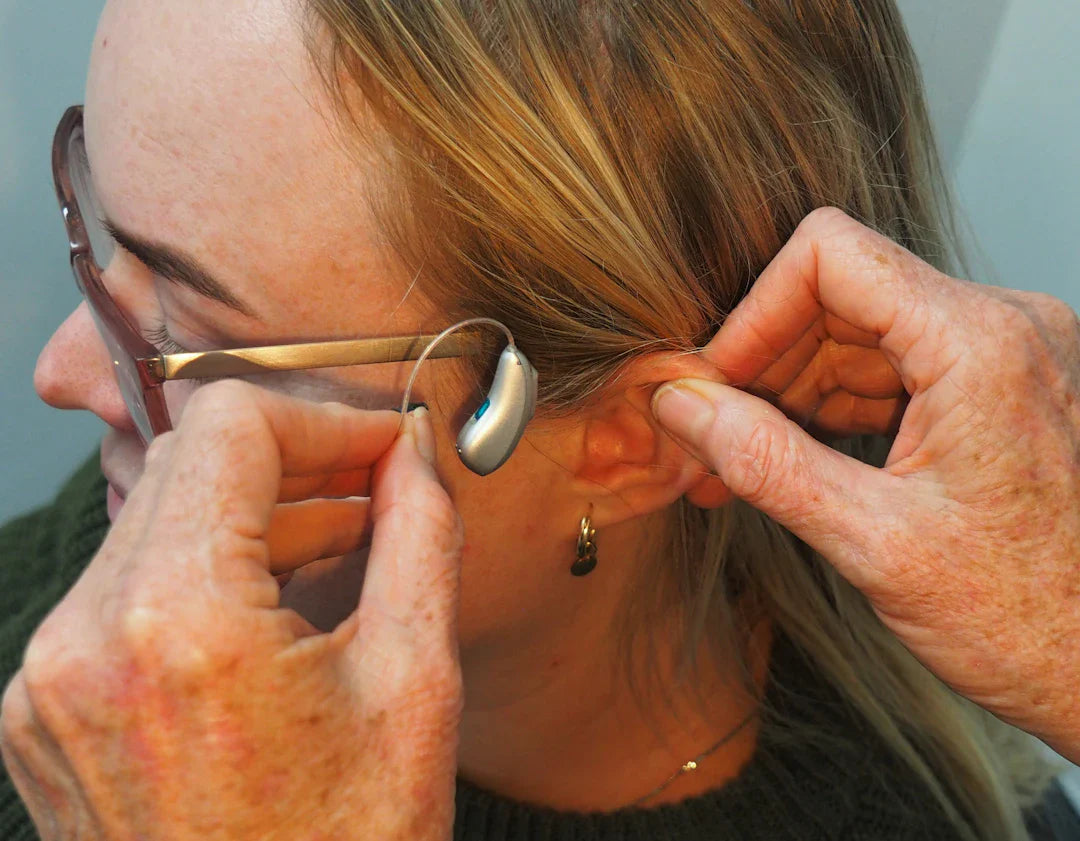Frequently Asked Questions
1. What are hearing aids?
2. What is the difference between analogue and digital hearing aids?
3. What are some benefits of analogue hearing aids?
4. What advantages do digital hearing aids offer?
5. How do I choose the right hearing aids for my needs?
In the realm of audiology, hearing aids have evolved significantly over the years, shifting from traditional analogue devices to advanced digital technology. Understanding the technology behind hearing aids is essential for anyone considering a purchase. This guide will explore the key differences between analogue and digital hearing aids, the benefits of each, and how they integrate with modern features like partner microphone mode.
What Are Hearing Aids?
Hearing aids are small electronic devices designed to assist individuals with hearing loss. They work by amplifying sound, making it easier for the wearer to engage in conversations and enjoy their surroundings. With technological advancements, hearing aids now offer a range of sophisticated features tailored to meet individual needs. To make an informed decision, it's crucial to understand the two main types of hearing aid technology: analogue and digital.
The Basics of Analogue Hearing Aids
Analogue hearing aids have been around for decades, utilising straightforward technology to amplify sounds. These devices convert sound waves into electrical signals, which are then amplified to a level that the user can hear. Here are some key features of analogue hearing aids:
Simple Functionality
Analogue hearing aids generally operate with basic functionality. They can adjust volume levels, but often lack the advanced features that come with digital models. Users can typically expect:
- Fixed Frequency Response: Analogue devices often amplify all sounds equally, which may result in a less tailored experience.
- Limited Environmental Adaptation: They don’t automatically adjust to different sound environments.
- General Sound Amplification: All sounds are amplified, which can include background noise that might be distracting.
Benefits of Analogue Hearing Aids
Despite their limitations, analogue hearing aids do have some advantages:
- Cost-Effective: Typically, these devices are less expensive than their digital counterparts.
- Simplicity: Easy to operate, making them suitable for those who prefer uncomplicated technology.
- Durability: Generally, analogue devices are robust and have fewer complex components that can fail.
The Rise of Digital Hearing Aids
Digital hearing aids represent the cutting edge of audiology technology, providing a more personalised experience. Unlike their analogue counterparts, digital hearing aids convert sound waves into digital signals, which allows for a greater range of adjustment options. Below are some notable features of digital hearing aids:
Advanced Processing Capabilities
Digital hearing aids employ sophisticated algorithms to process sounds, allowing users to experience a more comfortable listening environment:
- Customizable Settings: Users can tailor their hearing experience by adjusting various settings based on personal preference, such as frequency responsiveness.
- Noise Reduction: These devices can differentiate between speech and background noise, enhancing the clarity of conversations while minimising distractions.
- Environmental Adaptation: Advanced digital models can automatically adjust to different acoustic environments (like busy streets or quiet rooms), providing the best hearing experience possible.
Special Features
Modern digital hearing aids come with a plethora of features designed to enhance the user experience:
- Wireless Connectivity: Many digital hearing aids can connect to smartphones, televisions, and other devices, allowing for seamless audio streaming.
- Partner Microphone Mode: This feature enables the user to focus on a conversation partner while reducing background noise, which is particularly useful in social settings.
- Remote Adjustments: Some devices allow audiologists to adjust settings remotely, ensuring a customised hearing experience without the need for in-person visits.
Comparing Analogue and Digital Hearing Aids
When deciding between analogue and digital hearing aids, it's important to consider the advantages and drawbacks of each type:
Performance
Digital hearing aids excel in complex listening environments, making them preferable for many users. They offer features like partner microphone mode that significantly enhance conversation clarity. In contrast, analogue aids may struggle in these situations, providing only basic amplification without the smarter noise management.
Flexibility and Adaptability
The adaptability of digital hearing aids is a standout feature. They can adjust settings according to the listening environment, making them suitable for various scenarios. Analogue devices offer fixed settings, making them less suitable for dynamic auditory environments.
Cognitive Load
Digital hearing aids decrease cognitive load by filtering out background noise and elevating speech sounds. This can lead to improved comprehension and reduced fatigue during conversations. Analogue devices often overload users with excess noise, draining their energy during extended wear.
Choosing the Right Hearing Aids for You
When considering hearing aids, it's vital to consult with an audiology professional who can help you understand your specific needs and preferences. Here are some factors to take into account when making your decision:
Degree of Hearing Loss
Your audiologist will assess the extent of your hearing loss and recommend devices suitable for your condition. Generally, those with mild to moderate hearing loss may benefit from either type, while individuals with severe loss may require the advanced capabilities of digital aids.
Lifestyle Considerations
Your lifestyle plays a significant role in your choice of hearing aids:
- If you often socialise in noisy environments, digital hearing aids with noise-cancelling features may be more beneficial.
- If you prefer basic functionality and are budget-conscious, analogue aids might be a better match.
Budget
Cost can be a determining factor, as digital hearing aids typically have a higher price point due to their advanced technology. However, consider the long-term benefits of investing in a digital device with superior performance and features, as this can lead to better quality of life.
The Future of Hearing Aids
The audiology field continues to innovate, with promising advancements on the horizon. Current trends indicate a growing emphasis on user-friendly designs and digital integration, meaning we can expect even smarter hearing aids in the future. Potential innovations include:
Artificial Intelligence Integration
AI technology is becoming increasingly prevalent in hearing aid design. With AI, devices can learn the user's preferences and improve performance over time, creating a more tailored experience without manual adjustments.
Telehealth Services
The rise of telehealth is transforming the way audiologists provide support to users. Remote consultations and adjustments can streamline the fitting process and ongoing care, ensuring users always have access to expert assistance.
Ready to Transform Your Hearing Experience?
The choice between analogue and digital hearing aids can seem daunting at first, but understanding the key differences is the first step in finding the right solution for you. Whether you prioritise budget, technology, or environmental adaptability, there's a perfect match out there waiting for you. Embrace the advancements in hearing aid technology to enjoy a world of sound like never before!
Investing in your hearing health is investing in your quality of life. With the right device, you'll be well on your way to reconnecting with family, friends, and the world around you.




